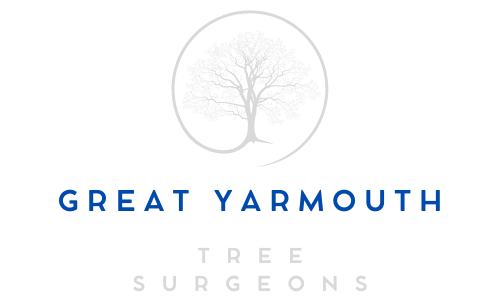How to Trim Trees Without Damaging Bark
Introduction: Trimming trees is an essential part of tree care, helping to maintain their health, shape, and safety. However, it’s crucial to approach tree trimming carefully, as improper techniques can lead to bark damage, harming the tree’s health and aesthetics. In this blog post, we’ll discuss how to trim trees without damaging their bark, ensuring your trees thrive and remain a beautiful part of your landscape. Great Yarmouth Tree Surgeons is here to guide you through the process.
1. Use the Right Tools
Choosing the right tools is the first step in preventing bark damage during tree trimming. Quality pruning shears, loppers, and saws are essential for tree work. Ensure that your tools are sharp and well-maintained to make clean cuts.
2. Prune at the Right Time
Timing is crucial when it comes to tree trimming. The best time to trim most trees is during the dormant season, typically in late fall or winter. During this time, the tree is less active, which reduces the risk of sap flow and bark damage. However, dead or hazardous branches can be pruned at any time of the year.
3. Follow Proper Pruning Techniques
To avoid bark damage, use the following techniques when pruning:
a. Make Proper Cuts: Always make clean cuts just outside the branch collar, which is the slightly raised area where the branch attaches to the trunk. Cutting too close or leaving stubs can harm the tree.
b. Avoid Tearing: Ensure your cuts are clean and avoid tearing or stripping the bark. Torn bark can create open wounds more susceptible to disease and pests.
c. Angle Your Cuts: Using a three-cut method removes larger branches. Make an undercut a few inches from the trunk first, then make a top cut slightly farther out. Finally, cut just outside the branch collar to prevent tearing.
4. Know the Tree’s Limits
Different tree species have varying tolerance levels when it comes to pruning. Some trees, like oaks, are more sensitive to pruning and may need special care to avoid bark damage. Understanding your trees’ specific needs and limits is essential to preserving their health.
5. Limit Wound Size
Minimise the size of wounds when trimming by making precise cuts. More minor wounds heal faster and are less likely to attract pests and diseases. To prevent excessive stress, avoid removing more than 25% of a tree’s canopy in a year.
6. Consider Hiring a Professional
For larger or more complex tree trimming jobs, hiring a professional tree surgeon from Great Yarmouth Tree Surgeons is wise. Experienced arborists have the knowledge, skills, and equipment to trim trees without causing bark damage while maintaining the tree’s health and aesthetics.
Conclusion: Proper tree trimming is a crucial aspect of tree care, but it must be done correctly to avoid damaging the tree’s bark. By using the right tools, following proper pruning techniques, knowing your tree’s limits, limiting wound size, and considering professional help, you can ensure your trees remain healthy and beautiful additions to your landscape for years to come. Great Yarmouth Tree Surgeons is here to assist with all your tree trimming and care needs, so don’t hesitate to reach out for expert guidance and assistance.
Call us on: 01493 807 192
Click here to find out more about Great Yarmouth Tree Surgeons
Click here to complete our contact form and see how we can help with your tree’s needs.

